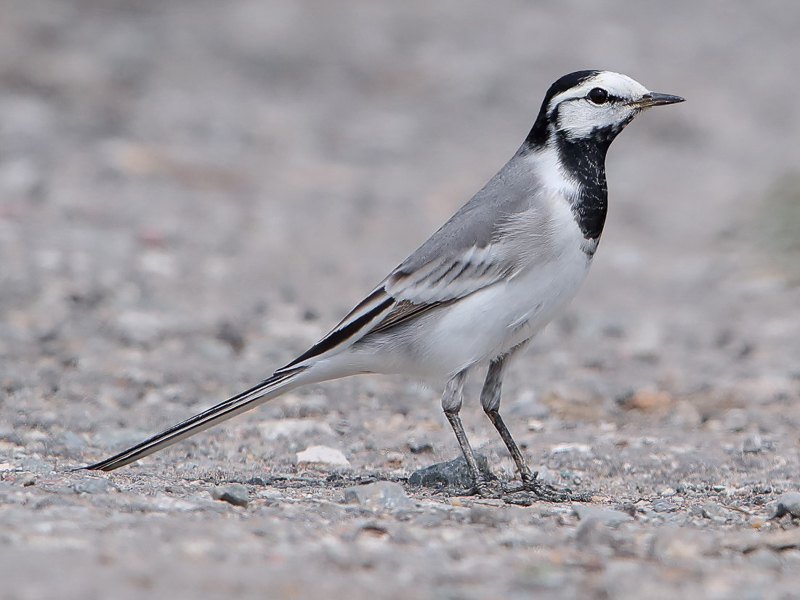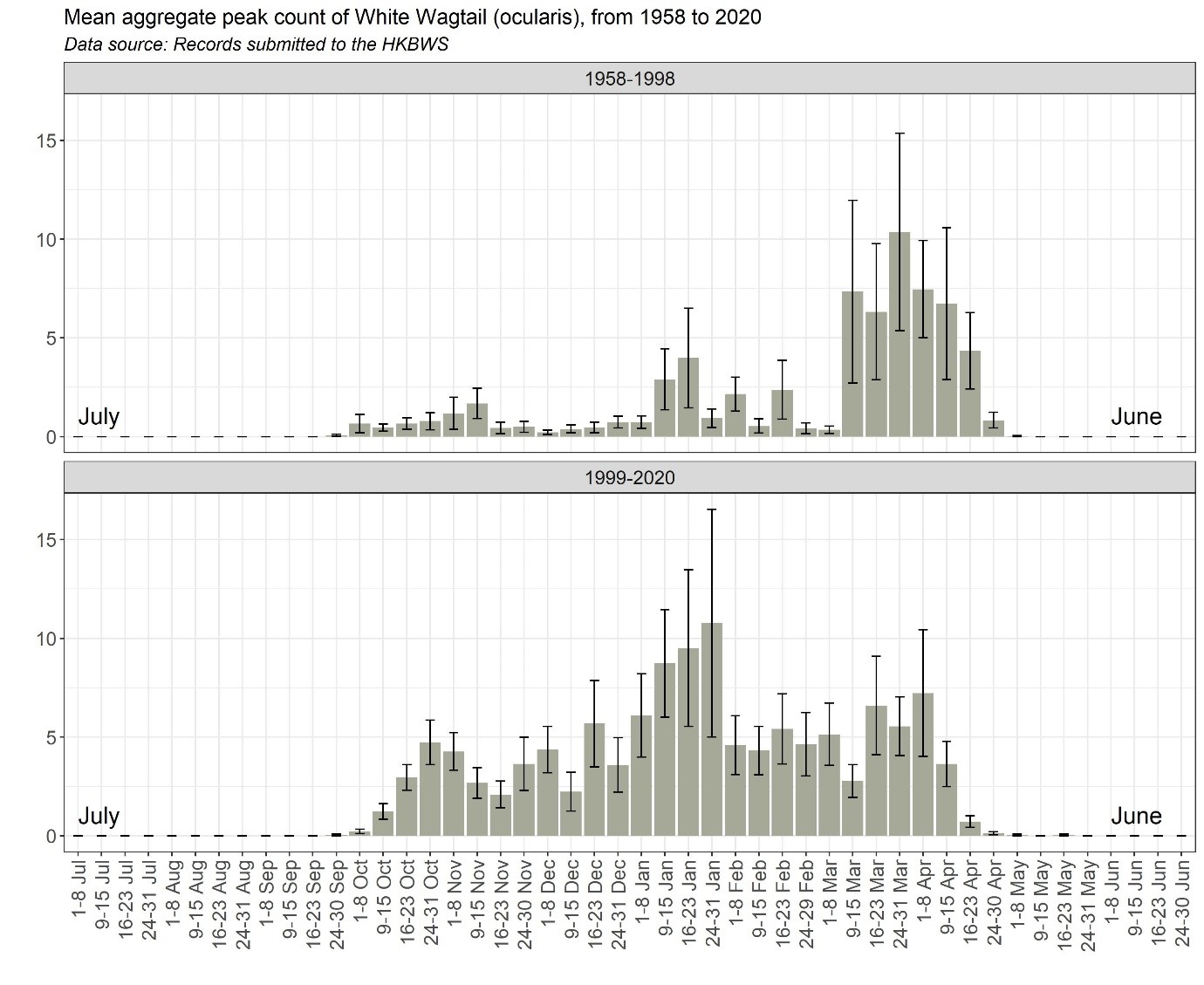White Wagtail Motacilla alba ocularis 白鶺鴒
Category I. Uncommon winter visitor.
IDENTIFICATION

Apr. 2019, Michelle and Peter Wong. Adult male, breeding plumage.
16.5-18 cm. Often appears longer-tailed than other taxa occurring in HK. Adult male in breeding plumage has narrow blackish eye stripe from bill to rear ear coverts often drooping down toward neck, black rear crown to nape, black throat, half-collar and chest, rather pale grey upperparts, and broad white tips to wing coverts. Adult female is slightly duller and less well-marked.

Jan. 2020, John and Jemi Holmes. Adult winter male.
Adult winter has white throat and black crown and nape.

Jan. 2024, Paul Leader. Adult winter female.
Adult winter females usually have grey on crown and nape.

Dec. 2024, Paul Leader. First-winter.
First-winters resemble adult female winter plumage but have greyer head and more distinct wing bars.
VOCALISATIONS
The typical flight call is a double note ‘chee-chik’; also ‘chik’ or ‘chee-chik-chik’. The similarity to the call of Grey Wagtail is greater than is the case with leucopsis.
DISTRIBUTION & HABITAT PREFERENCE
Although wetland-associated, and thus frequently seen near water but not dependent on it, the distribution is more focused on the Deep Bay area than is the case with leucopsis. Migrants, however, are seen both in the fish pond areas and elsewhere. The only nocturnal roost record concerns 15 birds in Ficus benjamina trees at HK International Airport together with 250 leucopsis.
OCCURRENCE
M. a. ocularis is a passage migrant and winter visitor from October to April, with highest numbers occurring midwinter and a minor increase also noted in spring (Figure 1). Until the 1990s the largest numbers of ocularis generally occurred during spring migration, the highest count being 190 at Tsim Bei Tsui on 25 March 1995. Since then, the highest counts have more often occurred in midwinter, the highest being 118 at Nim Wan on 25 January 2011.
The extreme dates given for this taxon by Herklots (1967) were 23 August and 30 May, whereas since the 1990s the equivalent dates are 29 September and 17 May, with only two records after 29 April.
In the context of global heating induced by climate change, the decline in numbers and the shorter period of occurrence in spring coupled with higher numbers in winter could be a response to milder winters allowing more birds to winter further north. However, it might also reflect a decrease in the population of birds that migrates through HK.
Herklots (1934) stated that ocularis was recorded from early September to the end of April and was ‘undoubtedly the commonest wagtail during the winter’; he also described leucopsis as a common winter visitor. Subsequent comments by the same author (Herklots 1953) were along the same lines. This is in marked contrast to the pattern noted subsequently.
BEHAVIOUR, FORAGING & DIET
Forages by walking or running after insects, and occasionally by leaping up to catch them mid-air or after a short aerial pursuit. Tail-pumping is frequently carried out while walking and perched, and at a greater speed upon landing or after running.
It is likely that birds roost with the large numbers of leucopsis and are overlooked.
RANGE & SYSTEMATICS
M. a. ocularis breeds in north-central and east Siberia reaching the north coast of the Sea of Okhotsk, the Chukotsky Peninsula and western Alaska; winters in China south of the Yellow River to Indochina, northeast India and scarcely to Malaysia and Borneo (Alström et al. 2003).
Polytypic with many subspecies. Those recorded in HK are leucopsis, ocularis, lugens and personata.
CONSERVATION STATUS
IUCN (Motacilla alba): Least Concern. Population trend stable.
Figure 1.

Alström, P., K. Mild and B. Zetterström (2003). Pipits and Wagtails of Europe, Asia and North America. Christopher Helm, London.
Herklots, G. A. C. (1934). The birds of Hong Kong. Part XVI. Family Motacillidae (Pipits and wagtails). Hong Kong Naturalist 5: 163-169.
Herklots, G. A. C. (1953). Hong Kong Birds. South China Morning Post, Hong Kong.

